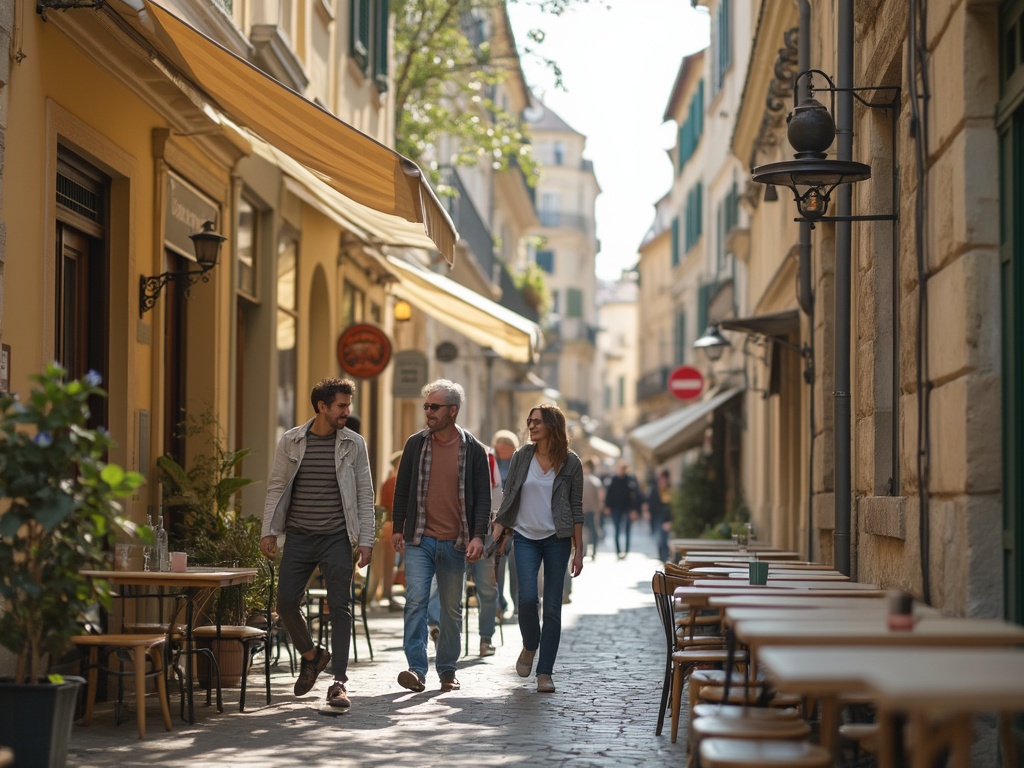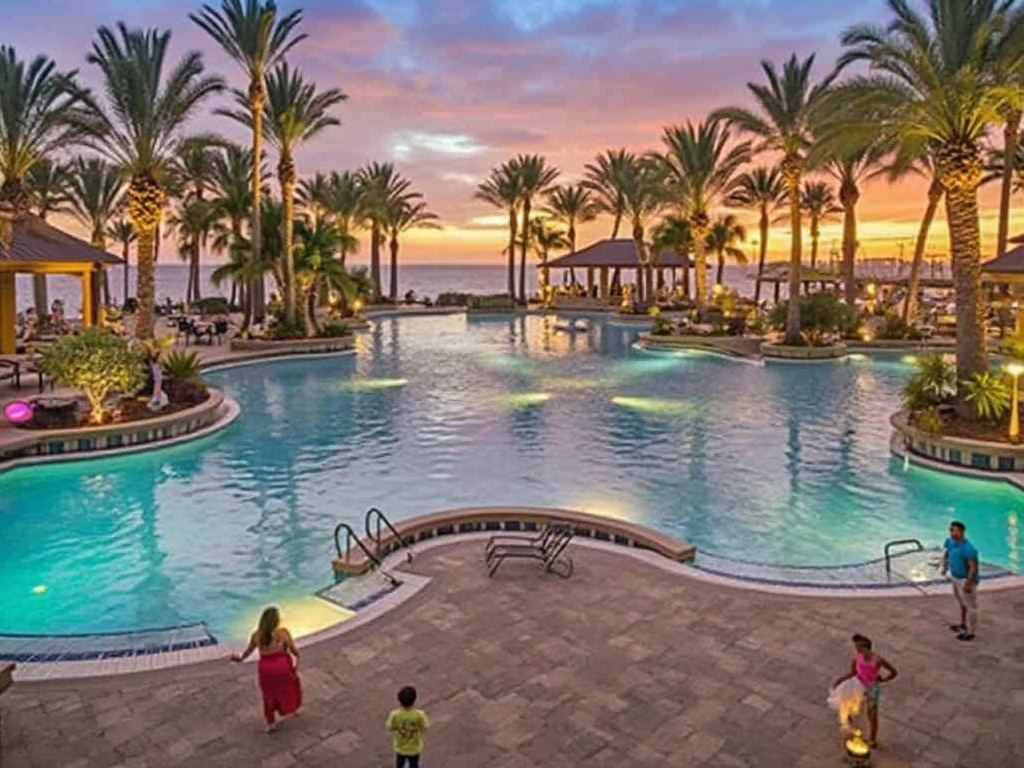Here's my corrected and formatted version:
Europe's hidden cities offer incredible experiences that match or exceed their popular neighbors. These lesser-known destinations blend historic significance with modern culture, creating unique and unforgettable visits. From pedestrian-friendly streets to stunning architectural masterpieces, each city tells its own remarkable story.
Key Takeaways:
- Ljubljana features a pedestrian-only center that combines Roman history with a thriving craft beer scene, all overlooked by an impressive hilltop castle
- Budapest delivers exceptional value with its distinctive split personality – featuring historic thermal spas and popular ruin bars at reasonable prices
- Riga stands out with its exceptional Art Nouveau buildings, while Wroclaw charms visitors with its collection of playful bronze gnome sculptures
- Tirana catches the eye with its mix of Ottoman elegance and bold Soviet-era structures, featuring striking murals and repurposed bunkers
- Graz and Lucerne represent perfect alternatives to typical Alpine destinations, mixing UNESCO heritage sites with breathtaking mountain views and rich cultural events
Europe's Best-Kept Secret: Ljubljana's Fairy-Tale Charm
A Car-Free Paradise with Ancient Roots
Ljubljana's pedestrian-only center transforms this Slovenian capital into a magical escape. Walking through cobblestone streets, I discovered a city where café culture spills onto squares and bridges without the intrusion of traffic noise. The star attraction, Ljubljana Castle, stands proudly on its hilltop perch, offering breathtaking views stretching to the snow-capped Julian Alps.
Modern Vibrancy Meets Roman Legacy
This city hides an incredible past as the Roman settlement of Emona, with ancient walls still visible throughout the old town. Today's Ljubljana pulses with modern energy, especially in its craft beer scene. Here are my top spots for beer enthusiasts:
- Pivnica Union – Home to Slovenia's oldest brewery
- Lajbah Pub – Features 23 rotating taps of local brews
- Tozd Bar – Combines waterfront views with artisanal beers
Cultural Fusion: Where East Meets West in Budapest
A Tale of Two Cities United
Budapest's unique charm springs from its split personality – ancient Buda stands proud on rolling hills while modern Pest buzzes with energy across the Danube. I love how the Buda Castle watches over the city like a guardian of history, while trendy ruin bars breathe new life into abandoned buildings below.
These incredible ruin bars showcase Budapest's creative spirit. Hidden in old factories and forgotten spaces, they're packed with mismatched furniture, local art, and an electric atmosphere you won't find anywhere else.
The city's famous thermal baths tell stories spanning centuries. Here's what makes them special:
- Széchenyi Baths dazzle with neo-baroque architecture and 18 pools
- Gellért Baths showcase stunning Art Nouveau designs
- Rudas Baths date back to Turkish rule in the 16th century
- Király Baths offer an authentic local experience away from tourist crowds
Budget travelers will find Budapest refreshingly affordable. A daily budget of $30-40 covers comfortable accommodation, hearty Hungarian meals, and spa entry. This makes it perfect for experiencing luxury without breaking the bank.
The mix of Ottoman influences, Habsburg grandeur, and modern Magyar culture creates something magical. From sipping pálinka in hidden courtyards to soaking in thermal waters under ornate domes, Budapest serves up unforgettable experiences that blend past and present perfectly.
Art and History: The Creative Spirits of Riga and Wroclaw
Hidden Cultural Treasures
Riga's Art Nouveau district stands as a stunning canvas of architectural brilliance, with buildings that tell stories through their ornate facades and bold decorative elements. The city's UNESCO-recognized center features masterpieces like the Cat House and Alberta Street's elaborate buildings.
Meanwhile, Wroclaw's charm lies in its whimsical spirit, brought to life through hundreds of bronze gnome statues scattered across the city. These playful figures create an engaging treasure hunt through medieval streets and modern squares. Here's what makes these artistic havens special:
- Over 300 gnome statues dot Wroclaw's streets, each with unique personalities and stories
- Riga boasts the highest concentration of Art Nouveau buildings in Europe
- Wroclaw's Market Square hosts vibrant cultural festivals year-round
- Riga's historic buildings feature intricate floral patterns and mythological figures
These cities prove that Europe's lesser-known destinations pack an incredible artistic punch.

Mediterranean Mysteries: Narbonne and Tirana's Hidden History
Narbonne's Roman Legacy
I've discovered that Narbonne holds some of France's most striking Roman treasures, often overlooked by travelers rushing to more famous destinations. The Cathedral of Saint-Just and Saint-Pasteur stands as a testament to this rich heritage, mixing Roman influence with Gothic grandeur. Its soaring 41-meter-high choir vault creates an awe-inspiring space that'll take your breath away.
Tirana's Architectural Time Machine
Albania's capital, Tirana, offers a fascinating blend of Ottoman charm and Soviet-era boldness. Here's what makes this city an absolute must-visit:
- Skanderbeg Square showcases Ottoman-style buildings painted in vibrant colors
- Communist-era bunkers transformed into modern art spaces
- The National History Museum features a striking Soviet-style mosaic
- Local cafes housed in restored Ottoman mansions
- Street art that tells stories of political transformation
Standing in central Tirana feels like stepping through different centuries at once. The Express Walking Tour path takes you past restored mansions with traditional Turkish bay windows right next to stark Soviet-style apartment blocks. This mix creates an exciting urban landscape that's unlike anything else in Europe – imagine sipping Turkish coffee in a communist-era building that's been painted rainbow colors!
Alpine Alternatives: Graz and Lucerne's Mountain Magic
Graz: Austria's Creative Hub
Graz sparkles as a hidden creative force in Austria, flaunting its UNESCO City of Design status with bold architectural wonders. I love how modern art installations blend with medieval buildings, creating an exciting mix of old and new throughout the city streets.
Lucerne's Timeless Appeal
Tucked between dramatic Alpine peaks, Lucerne showcases Switzerland's most striking wooden bridges, including the iconic Chapel Bridge from the 14th century. The city buzzes with year-round activities that'll get your heart racing: summer hiking trails wind through mountain meadows, while winter brings excellent skiing just minutes from the city center. Local cultural festivals fill the calendar, from the classical Lucerne Festival to vibrant street food markets in the Old Town squares.

Sources:
The Tumbling Nomads
Pocket Wanderings
Economic Times
Time Out
AAA Insurance





